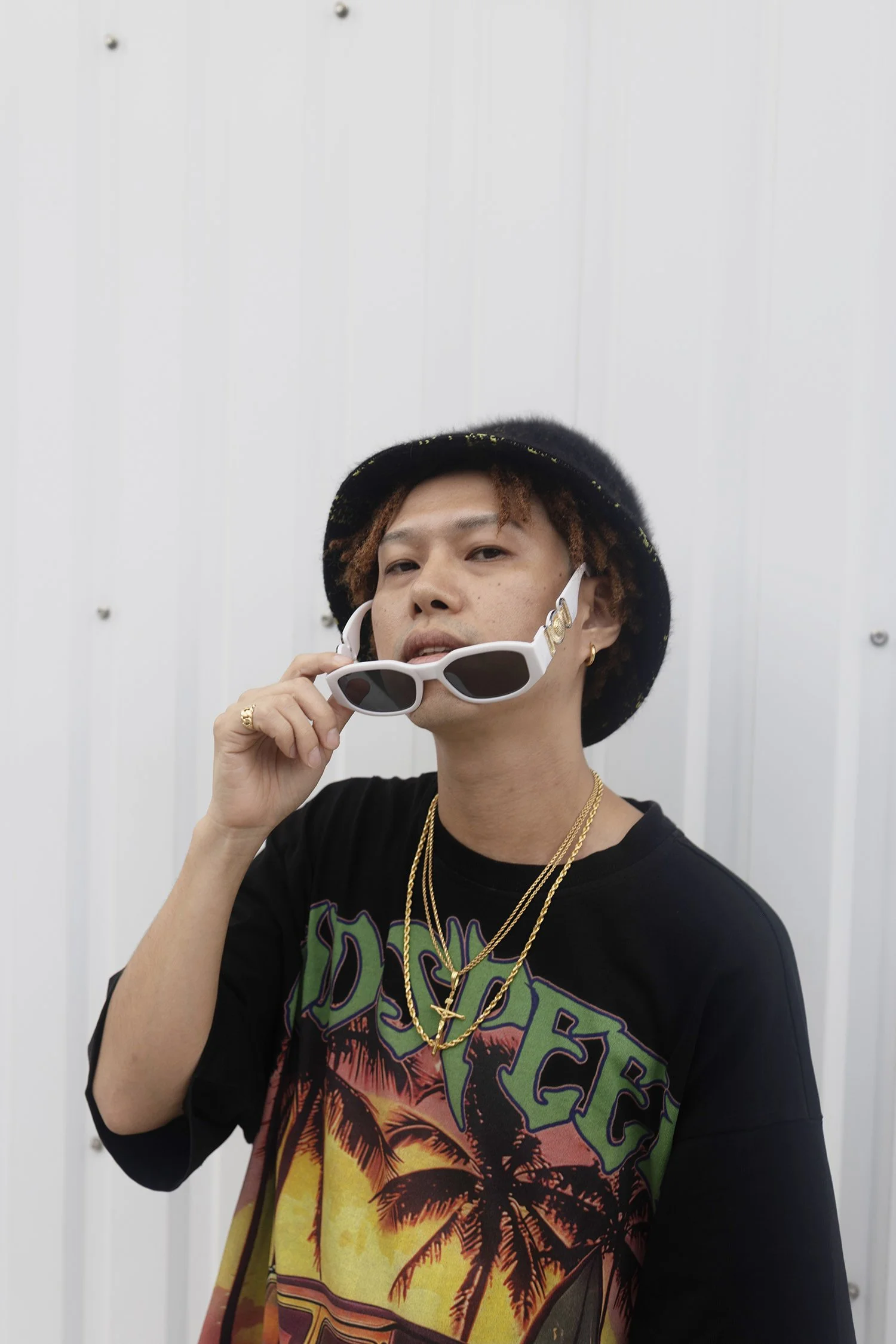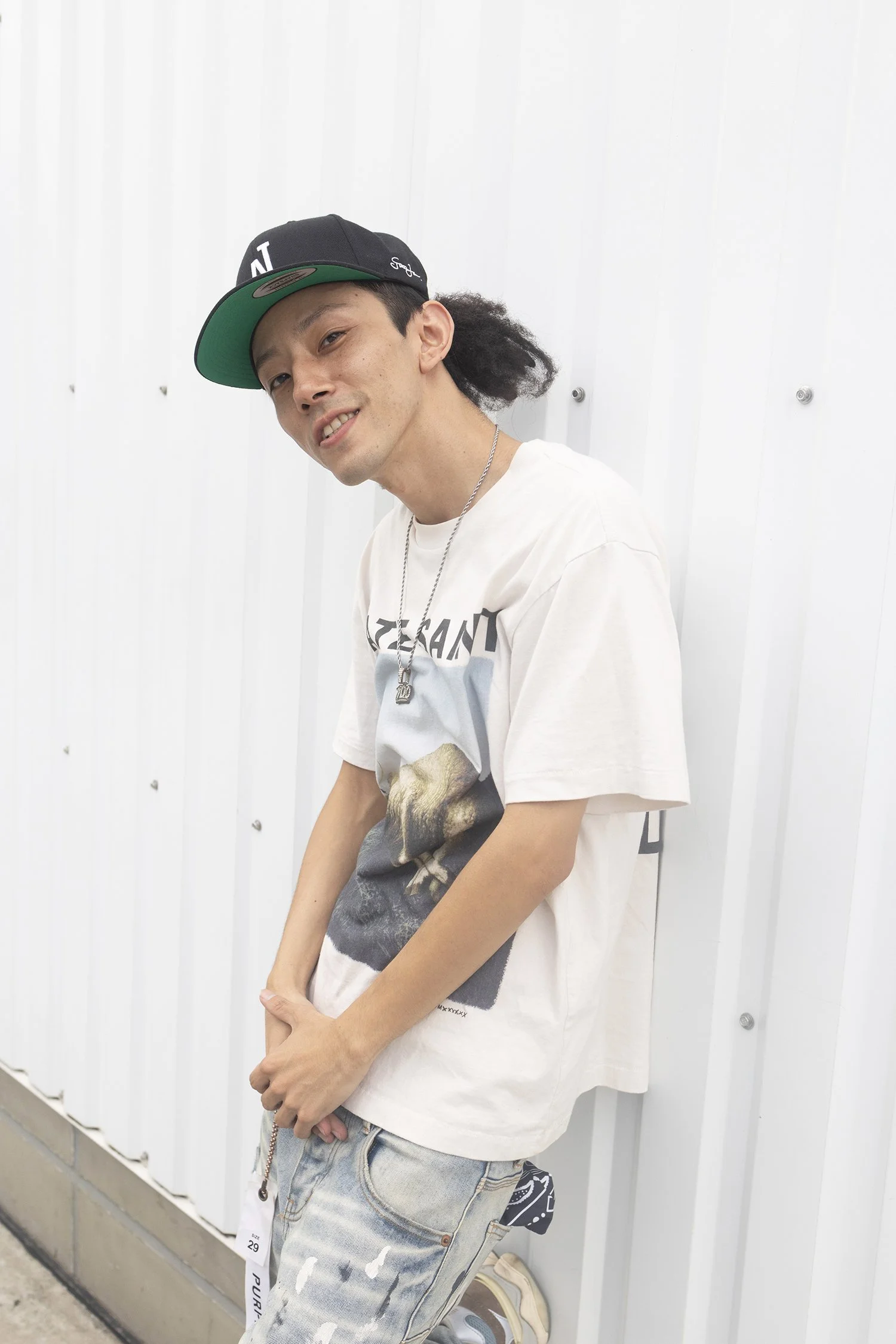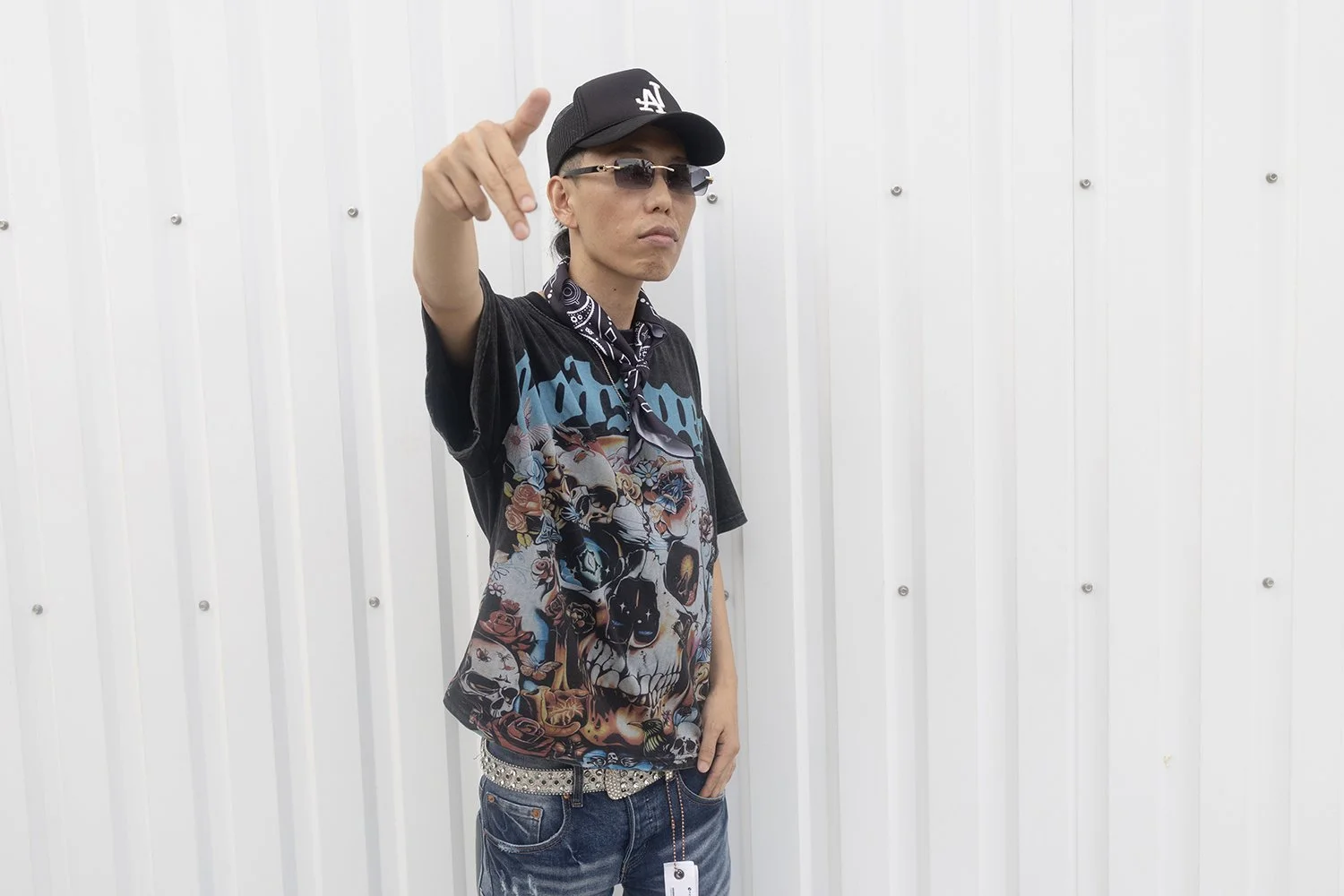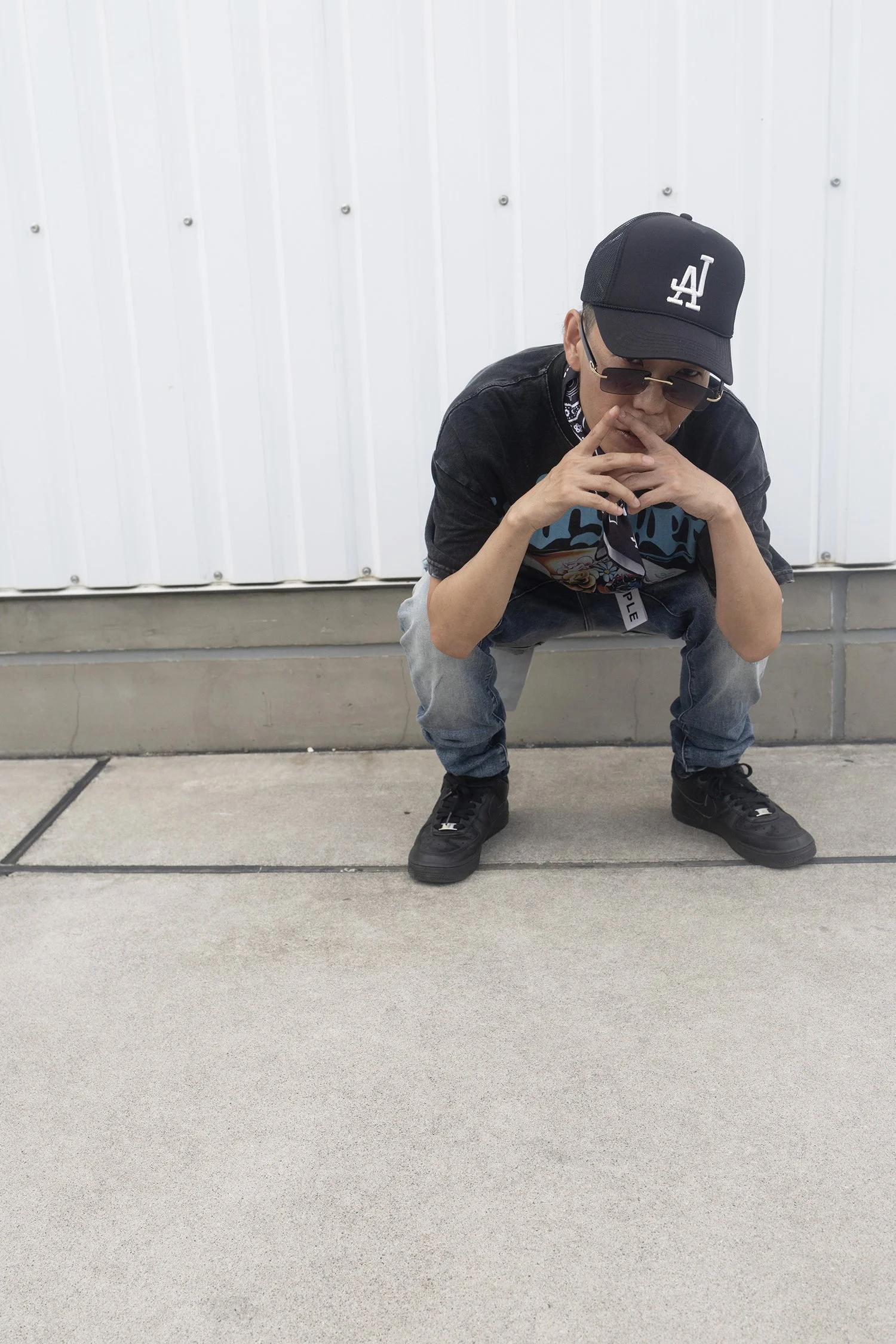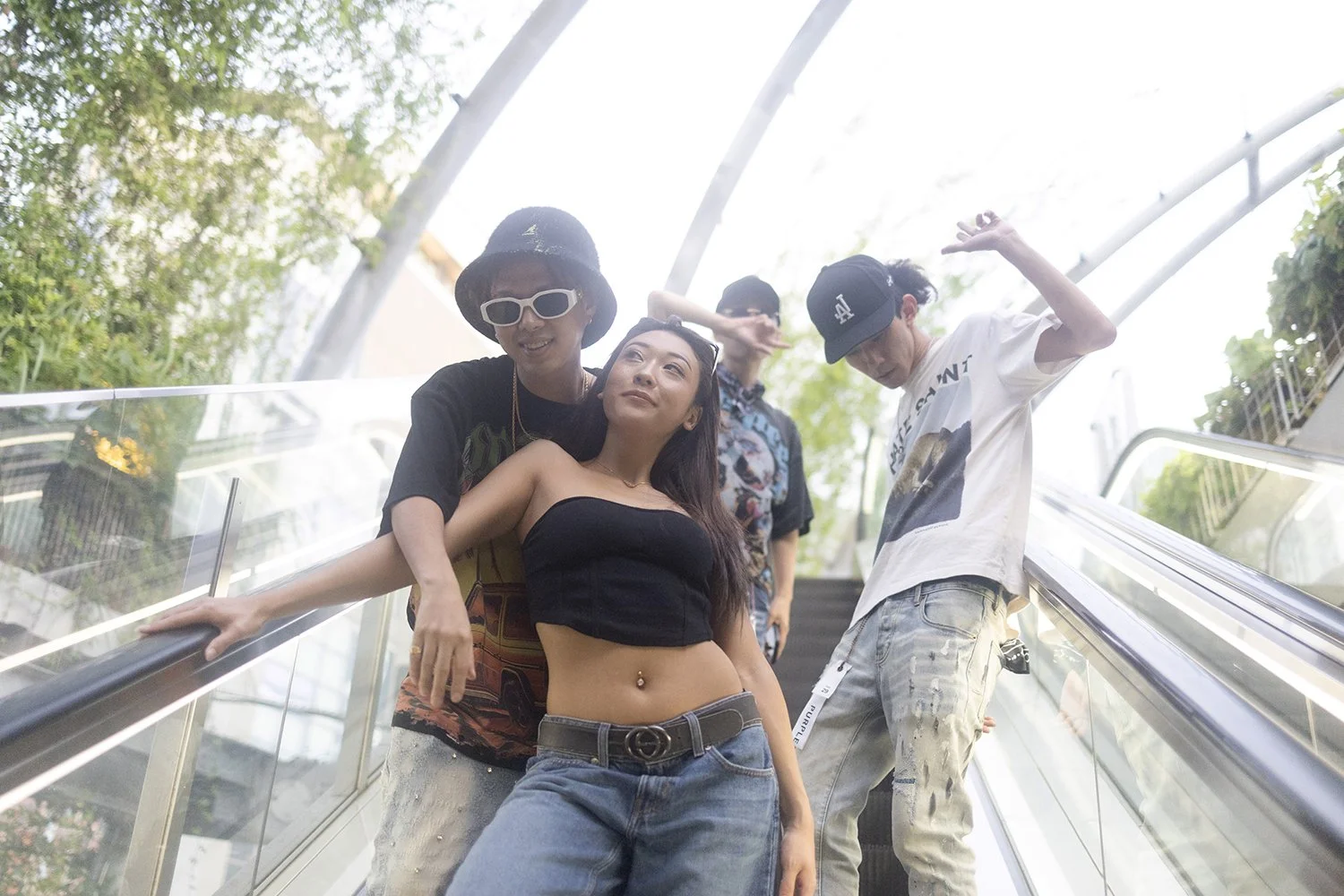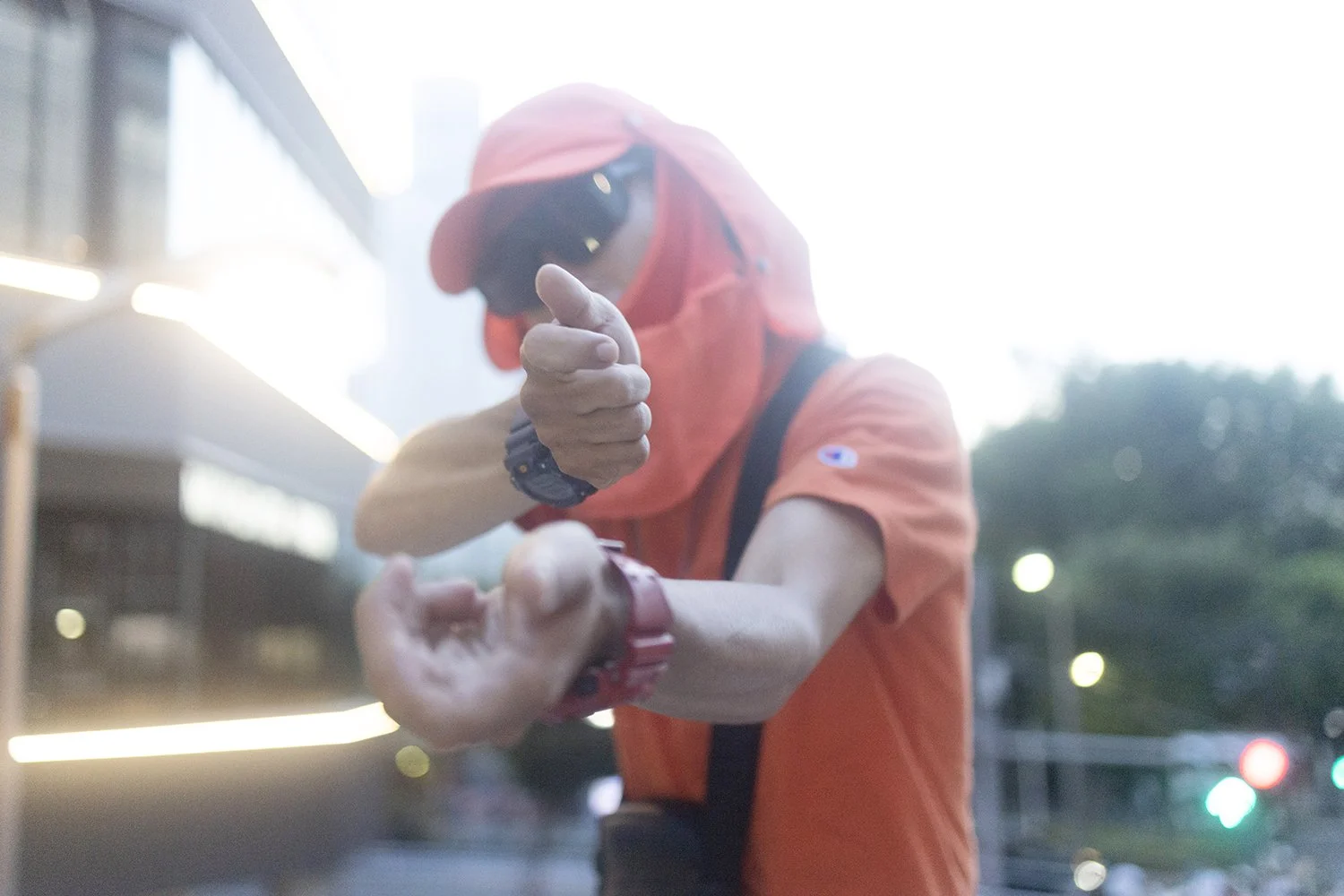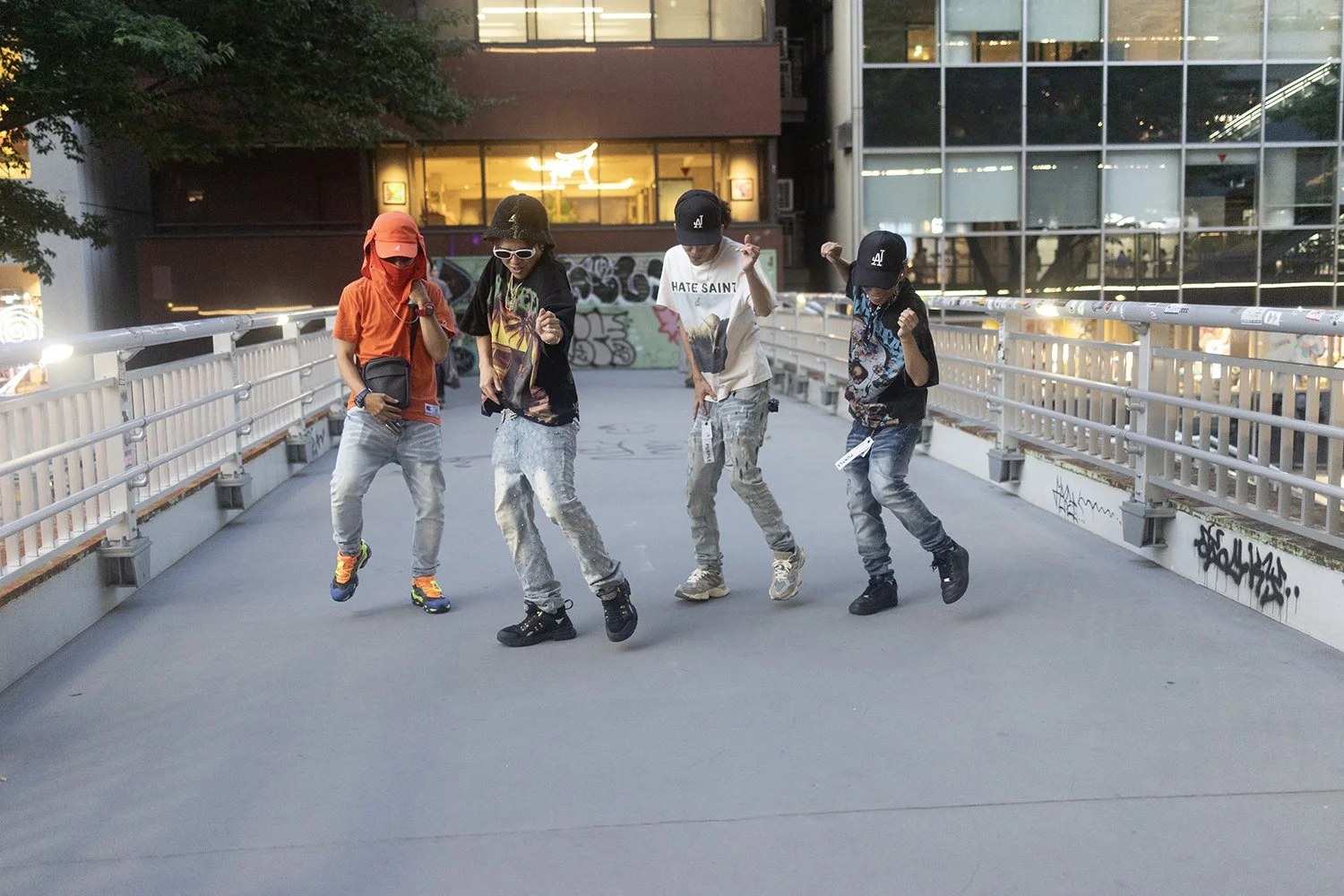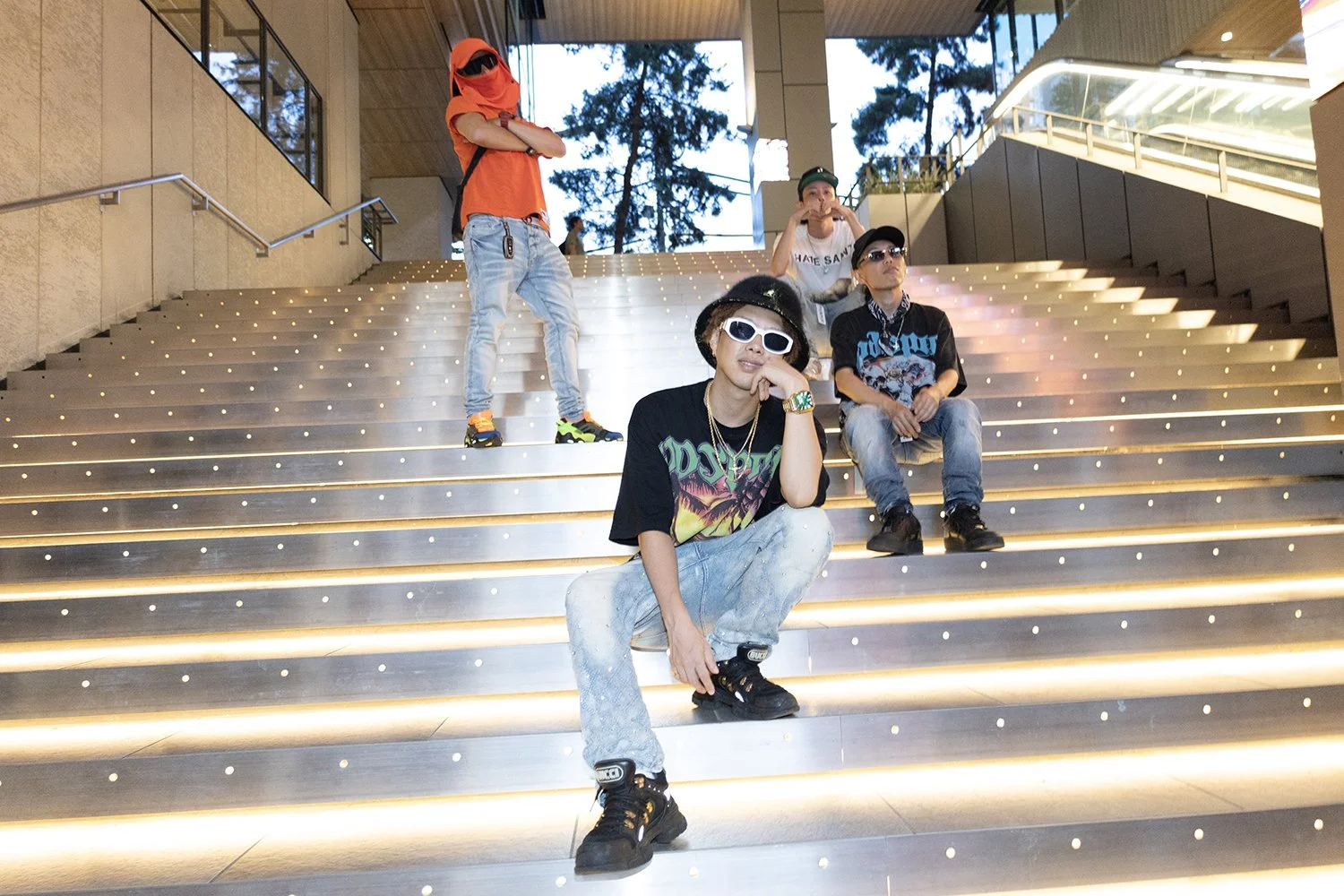Cornbread and JAtoJA Movement: A Global Force in Dancehall Culture
Entrepreneur, Recording Artist, Dancer, Choreographer: Cornbread, Location: Miyashita Park, Tokyo, Japan, Year: 2025, Photographer: Ajani Charles
Approximately a 19-minute read.
Outline
Japanese Dancehall: History and Legitimacy
Discovering Cornbread and JAtoJA
Miyashita Park: Where Paths Converged
Shibuya Street-Level Portraits
Authenticity vs. Rigid Cultural Norms
The Japan-to-Jamaica Exchange
Cornbread’s Global Contributions
Japanese Dancehall: History and Legitimacy
Since I was an undergraduate student, I knew that dancehall music and culture were popular in Japan, and that a very small subset of the Japanese population took dancehall music and culture as seriously as the Jamaicans who created and innovated dancehall.
Some of my favourite dancehall artists, Beenie Man, Buju Banton, Dexta Daps, Mr. Vegas, Popcaan, Rvssian, Sean Paul, Shabba Ranks, Shenseea, Skeng, Spice, Supercat, Teejay, and Vybz Kartel (who is my favourite dancehall artist), have shaped not only my understanding of the genre but also its global influence, reaching audiences in countries like Japan.
Japanese dancehall practitioners and artists have not only embraced dancehall but earned legitimacy at its source; most notably Junko Kudō, who became the first non-Jamaican Dancehall Queen in 2002, and Bom Bom, who also earned a Dancehall Queen title in Japan.
A Dancehall Queen refers to a female dancer who displays exceptional skill, charisma, and distinctive style in a competitive setting, often aiming to be crowned in local or national dance contests.
Major contributors such as Mighty Crown, the Yokohama-based sound system, a collective of DJs, MCs, and audio engineers who perform and compete using powerful custom-built speaker setups, which won the 1999 World Clash, a high-stakes international competition where sound systems battle by playing tracked selections and dubplates to win over a crowd, helped build a strong domestic infrastructure for dancehall culture.
Japan also supports dancehall through scholarships and media, including Marvin D. Sterling’s research, which documents how the culture took root across the country.
Entrepreneur, Recording Artist, Dancer, Choreographer: Cornbread, Location: Miyashita Park, Tokyo, Japan, Year: 2025, Photographer: Ajani Charles
Together, these dancers, sound systems, and cultural institutions demonstrate that the Japan-to-Jamaica relationship is not one of imitation; it is one of appreciation, a respectful, mature, and reciprocal movement that continues to shape global dancehall.
Discovering Cornbread and JAtoJA
During the pandemic, through TikTok, I learned about Cornbread, aka Jaken, aka Japanese Ninja, a Japanese dancehall artist and dancer based in Tokyo, and soon after, I learned about his crew, JAtoJA Movement, a collective of dancehall dancers and creatives committed to the Japan-to-Jamaica cultural exchange. “JA to JA” means from Jamaica to Japan and Japan to Jamaica.
Cornbread and his crew have earned recognition not only domestically in Japan but also in Jamaica itself and in many other markets like China and South Korea, due to their command of dancehall movement, style, and voice.
Today, Cornbread has become the most well-known Asian dancehall dancer in the world, with over 500,000 followers across Instagram, TikTok, X, and YouTube; a global audience that reflects his impact far beyond Japan.
His achievements have been featured in Jamaica’s most prominent media outlets, including the Jamaica Observer and national television, making him one of the most respected Japanese figures in Jamaica today.
As someone committed to documenting, preserving, and elevating the cultural movements that have shaped me, especially hip-hop and dancehall, I made a quiet promise to myself: one day, despite not knowing when I would first set foot in Japan, I would photograph and document Cornbread and JAtoJA.
Entrepreneur, Recording Artist, Dancer, Choreographer: Cornbread, Location: Miyashita Park, Tokyo, Japan, Year: 2025, Photographer: Ajani Charles
Miyashita Park: Where Paths Converged
Sure enough, at around 6:00 PM JST on Friday, July 18, 2025, when I finally stood face-to-face with Cornbread, his girlfriend, and members of JAtoJA at Miyashita Park, my favourite urban park in Japan so far and a pulse-point for youth culture, I felt that familiar moment of alignment.
Once again, I had bridged the gap between imagination and reality, turning curiosity into connection.
My entire first trip to Japan unfolded like that; one manifestation after another, each proving that the visions I take seriously eventually take physical form.
Shibuya Street-Level Portraits
After we wrapped shooting at Miyashita Park, Cornbread took the lead in guiding us through Shibuya, pointing out street-level spots that he felt best represented the city’s dancehall-infused youth culture.
His spatial awareness in Tokyo was not tourist-level; it was the perspective of someone who has danced on every type of concrete the city has to offer.
Even with the constant surge of traffic and the relentless foot-traffic rhythm that makes Shibuya sometimes feel like it is vibrating, I remained fully locked into the shoot; nothing about the frenetic energy of the street could pull my focus away from Cornbread and his crew.
Dancer: Jet Life, Location: Miyashita Park, Tokyo, Japan, Year: 2025, Photographer: Ajani Charles
At one point, a security guard politely kicked us out of a mall’s outdoor staircase, smiling with the practiced courtesy that Japanese society demands, even though he was likely annoyed, if not outright angry.
We hesitated to follow his order disguised as a request.
Authenticity vs. Rigid Cultural Norms
That brief moment highlighted the contrast between the rigid, rule-bound norms of Japan and the uninhibited authenticity Cornbread and his crew embody through dancehall.
Both through our WhatsApp conversations leading up to the shoot and in person, Cornbread carried himself with the same relaxed confidence and unforced charisma that I have come to associate with Jamaicans; a sharp contrast to the overly formal, overly polite, and rigid social expectations that have shaped Japanese culture for centuries.
And that presence was not an act. Only a Japanese person who has consumed an enormous amount of dancehall, studied the culture deeply, and spent thousands of hours immersed among Jamaicans, listening and absorbing, could move the way Cornbread does.
His energy and fluency in the culture are real.
Dancer: Jet Life, Location: Miyashita Park, Tokyo, Japan, Year: 2025, Photographer: Ajani Charles
The Japan-to-Jamaica Exchange
Cornbread and the JAtoJA Movement are not merely admirers of dancehall; they are contributors to its evolution, pushing the Japan-to-Jamaica bridge forward.
For that reason, they are perfect additions to my ongoing project documenting dancehall and reggae culture in Japan: living proof that when respect, dedication, and cultural exchange align, borders become irrelevant.
Cornbread’s Global Contributions
Cornbread did not just study dancehall in Japan; he learned directly from Jamaican dancers and cultural elders, starting after his first trip to Jamaica at nineteen, and continuing for more than ten years of studying, practicing, and refining movement at the source.
He became the youngest winner of Japan’s No. 1 Dancehall King title, and he later won competitions in Jamaica, including the televised Dancin’ Dynamite, as well as a major contest in China, proving his skill in both the birthplace of dancehall and international arenas.
In an interview I watched on YouTube through The Fix in Jamaica, Cornbread explained that he learned English and patois partly through school and the reggae music his parents played during his childhood, including many classic Bob Marley records, and primarily through listening to Jamaican people and absorbing language the same way he absorbed dancehall culture: directly, socially, and through lived immersion.
He credits Jamaica’s street-level expression, the raw energy of the dance, the community vibes, the positive and sometimes even the negative emotional release, as what first grabbed him and made him want to be part of it.
Dancer: Dark Bad, Location: Miyashita Park, Tokyo, Japan, Year: 2025, Photographer: Ajani Charles
Mighty Crown were early role models for him, proving that Japanese artists could compete in dancehall at the highest international levels, and he saw them perform as a kid in Yokosuka.
JAtoJA Movement itself was named by a Jamaican artist who told Cornbread that if he was going to keep flying back and forth, learning culture in Jamaica and teaching it back in Japan, his crew should embody this very exchange: Jamaica to Japan, and Japan to Jamaica.
Today, Cornbread teaches dancehall throughout Asia, including China, Taiwan, Thailand, the Philippines, Singapore, and India, spreading Jamaican culture far beyond Japan’s borders.
His parents support him wholeheartedly; his mother even displays his Jamaican newspaper features inside the family bar, a proud and unconventional gesture in a culture where creative careers and entrepreneurship beyond family businesses are often discouraged.
Their support stands in stark contrast to traditional expectations imposed by many Japanese parents, who prioritize conformity and secure career paths over bold cultural expression.
Cornbread is also a recognized figure in Jamaican dancehall media, appearing in music videos alongside artists such as Skippa and Bawlin Clough, who validate his presence in the culture both at home and abroad.
Dancer: Dark Bad, Location: Miyashita Park, Tokyo, Japan, Year: 2025, Photographer: Ajani Charles
He emphasized that he does all of this out of genuine love for dancehall and Jamaica, not for novelty, not for currency, but because the culture changed his life and gave him a home away from home.
As an artist, Cornbread is prolific, and his music now circles the globe: his debut single Fresh Like gained traction in the U.S., and his follow-up release, Choppanese became the first Japanese dancehall track ever played on HOT97 in New York; a historic breakthrough in international reggae and dancehall broadcasting.
His new single, Toyota Prius is picking up steam, and as of Saturday, October 25, 2025, it has over 1 million views through TikTok and over 40,000 views through YouTube.
Watching Cornbread’s interview on behalf of The Fix reaffirmed for me why Cornbread and JAtoJA must be embedded into the visual and historical record of dancehall culture in Japan: they are young ambassadors of a global culture who approach Jamaica not as tourists, but as students, practitioners, and contributors.
Dancehall’s expansion in Japan is not a fringe curiosity; for some, it is a case study in how youth culture travels and adapts.
The next global breakthroughs in entertainment, lifestyle, and brand influence will come from cross-cultural movements like JAtoJA, where authenticity is earned, not manufactured.
Dance Crew: JAtoJA Movement, Location: Miyashita Park, Tokyo, Japan, Year: 2025, Photographer: Ajani Charles
References
Dancer: Jungle Justice, Location: Shibuya, Tokyo, Japan, Year: 2025, Photographer: Ajani Charles
Dance Crew: JAtoJA Movement, Location: Shibuya, Tokyo, Japan, Year: 2025, Photographer: Ajani Charles
Dance Crew: JAtoJA Movement, Location: Shibuya, Tokyo, Japan, Year: 2025, Photographer: Ajani Charles
Dance Crew: JAtoJA Movement, Location: Shibuya, Tokyo, Japan, Year: 2025, Photographer: Ajani Charles


